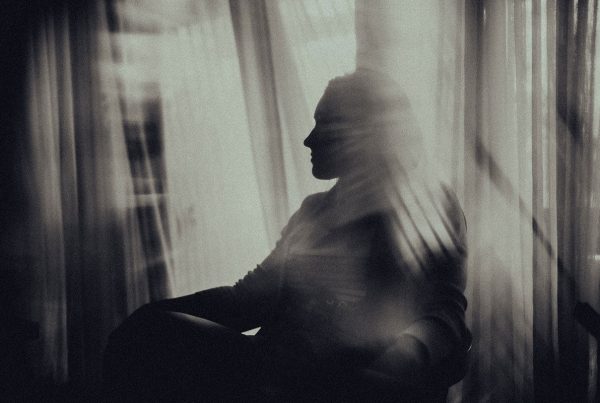 By Existential Universe Mapper
By Existential Universe Mapper
This is a story of a Land and its people whose history is shrouded in mystery. They are a diverse group of people with multiple languages, religious faiths, living customs, habits and preferrences. There are different opinions about their origins and how and when they chose to live together. Many people regard it as nothing more than a historical accident, but several others believe that they have common civilisational roots even if they may not have a shared geo-political history and commanalities of religion ,language etc. Several people of this land talk of a “glorious past” when they were at the forefront of human civilisation- in terms of material prosperty, technological advancement, cultural richness and spirituality. Simultaneously, people talk of the “back breaking” burdens of inequality, oppression. discrimination, backwardness, superstition etc. which the people of this land have inherited from their past. However, there is a shared belief that things are far from ideal at present and that in their endeavour to create a just, fair, equitable and prosperous society, they have to face many challenges.
In order to understand the psychological orientation of the people of this land, EUM was administered to a large number of people. While this was not a representative sample, there are some very strong reasons to believe that it is a fair indicator of the psychic landscape of this society. The main findings from the EUM study are as follows-
- URB emerged as the Universe which was most identified with (highest SC score)
- UPA was the most valued Universe (highest SI score)
- The Universe which was least identified with was USD (lowest SC score)
- The Universe which was least valued was UMI (lowest SI score)
- UPA registered the biggest increase from SC to SI
- UMI registered the biggest drop from SC to SI
- The OP score for USD was significantly higher than SC , but the SI score was much closer to SC than OP
- The OP score for UMI was significantly lower than SC, and the SI score was even lower
- The OP score for URB was lower than SC with SI falling somewhere in between
- The OP score for UPA was higher than SC and the SI score was even higher
- The OP score for UBP was slightly higher than SC , and goes down marginally in SI
- The OP score for UDS was lower than SC , with the SI score registering a further increase.
As stated earlier, since the sample was not representative of the entire population, some subjective tweaking was necessary. It was assumed that while the basic pattern (particularly in respect of relationship between SC, SI and OP scores) will hold true for the entire population, the absolute scores may show some change. It is highly likely that for the total population, UBP and URB scores will be higher whereas USD and UPA will be lower. Based on this assumptions following hypotheses are being offered –
- The psychic landscape is extremely supportive of both UBP and URB. The only pain point is the general belief that one is carrying more than one’s fair share of systemic responsibility and a wish to find some release from this burden.
- The psychic orientation is to “disown” USD and project it onto others. This is likely to get manifested through hyper-vigilance, passive aggression, deployment of indirect ways to influence, rationalisation of self-interest,etc.
- The psyche is experiencing a strong pull towards UPA. While the nature of this pull is complex, it appears that there is a counter-positioning of UPA and UMI. Thus it is likely that the two will be seen as obstacles to each other rather than as supportive of each other.
- While a degree of contra-pull between universes is inevitable, the extent to which it is reflected in this case, strongly suggests that both UPA and UMI are carrying huge shadows of earlier levels particularly USD
The Troika
The affairs of this land are looked after by a troika of three persons- Rajesh, Biplab and Aniket. Their broad EUM profiles are as follows-
Rajesh is a high UBP/USD and low UMI person. His world is confined to his immediate context and belonging system. He is hyper vigilant about any criticism/attack upon the established ways of his belonging system and perpetually ready to pull out his sword and fight against people who he considers as enemies. Rajesh has little patience with abstract constucts of humanistic values built around the notions of Individual choice and freedom. In his world, the only entity which matters is his “belonging system” and he sees his primary role as a protector/defender of the system to which he gives his complete allegiance. The psychic landscape (as described above) values Rajesh for his high UBP ( loyalty, upholding of tradition etc.) but is uncomfortable with the aggressive side of his USD. Simultaneously he becomes the carrier of repressed/suppressed aggression in the prevalent context. Thus Rajesh receives conflicting messages – the overt message is to restrain his aggressive USD, but the covert message is to act it out for the benefit of the group. Thus inspite of the overt disapproval, he is continuously “egged on” to fight on behalf of the system. On his part Rajesh values the psychic landscape for its valuing of UBP, but is critical of its suppressed/repressed USD. However here again there are conflicting messages. While on one hand he chastisises the context for it’s cowardice and impotence, he is quite happy to play the protector and in a sense be the “only man around”
Biplab in many ways is the counter point of Rajesh. He is high on USD and UMI but low on UBP. He is hyper critical of his belonging system and quick to identify all that is wrong with it. He swears by universal values of equality, human dignity, liberalism, social justice etc. and tends to regard allegiance to a belonging system (e.g. nationalism) as jingoistic. He is quick to spot structural inequities in the context and often takes cudgels on behalf of the underdog. To the larger context, Biplab is a bit of an enigma. Neither his high USD and UMI, nor his low UBP fit easily with the psychic landscape. He is sometimes dismissed as a romantic idealist/glib opportunist, sometimes shunned as a dangerous rebel and sometimes reverred as a saviour from the oppressions of the prevalent order. In many ways through him, the larger context keeps alive the hope for a fair, just and equitable society. On his part, Biplab often looks at the larger context as oppressed victims. He goads them to stand up for themselves and fight the “oppressor” but often finds it difficult to come to terms with their UBP orientation which he regards only as a liability. His reformer/crusader location often leads to his “acting upon” rather than “acting with” the very people on whose behalf he claims to be struggling. Thus de-facto, he ends up replacing one set of oppressions with another.
The third main character is Aniket- a person with high URB/UPA and low UMI. As against the romantic idealism of Biplab, his focus is on pragmatism and working towards betterment within the prevalent imperatives of the System. Unlike Rajesh, he is willing to question some of the prevalent practices of the context, but does not question its basic foundations. His belief is that the System is basically “fair and just” and it is upto the individual to make the most of it. Any engagement with systemic inequities is regarded as disruptive by him and he believes that all transformations should occour in a smooth, orderly and harmonious manner without disturbing the existing equilibrium. Since he combines the two universes which are most identified with (URB) and most valued (UPA), it is only natural that the psychic landscape should have greatest degree of comfort with him. The main difficulty that he encounters is that there can be very little emotive connect with this profile. Consequently as a person he remais “invisible” and often becomes a symbol on whom the collectivity dumps its expectations and dependency needs. On his part Aniket looks at the collective as his flock of sheep and engages with it in a patronising manner often without any real concern. Further, when the shadows of his UBP and USD raise their heads, he loses credibility and also becomes a target for discharging the wrath generated by “failed dependency”
The Plot
Rajesh, Biplab and Aniket had been living together with an uneasy equilibrium between them. Since each of them fulfilled some needs of the psychic landscape, they had no other choice but to tolerate each other. Aniket had a slight advantage over the other two by virtue of being non-contrversial and also his greater sync with the idealised psychic orientation (SI)of the people of the land. On the other hand, both Rajesh and Biplab generated a much higher level of emotive response. Thus they became the channels through which Aniket connected with the collective psyche of the land. However Rajesh and Biplab were always at each other’s throats particularly in respect of the tension between UBP and UMI. Wheras Rajesh would prefer a more tradition/community based approach, Biplab would press for an inclusive/egalitarian approach. Additionally both of them had their own set of problems with Aniket also. Between Biblab and Aniket there was often a conflct between UPA (e.g. techno-economic progress) and UMI (e.g. social justice). Similarly between Rajesh and Aniket there was a conflict between UBP (e.g. preservation) and UPA ( e.g. progress)
For a while, Biplab and Aniket formed an alliance, with an understanding that Biplab would keep his USD in check, and Aniket would incorporate some UMI concerns in his essentially UPA agenda. Simultaneosly, they chose to deal with the UBP orientation of the larger collective through a mixture of appeasement and compromise. In a diverse and pluralistic society, this was not an easy task. Often appesement of one group meant offending another, leading to fragmentation of the collective into several sub-groups with their respective set of grievances and claims. This was a great opportunity for Rajesh who had been smarting under the slight of having been marginalised by the alliance between the other two. He could now strengthen his hold over the psychic landscape by fuelling the sense of victimhood in the sub-groups. On the other hand, Both Biplab and Aniket started losing their sheen and started being seen as opportunistic individuals who neither had any conviction nor commitment to anything except their narrow self interest.
Over a period both Rajesh and Aniket started realising their mutual need for each other. Rajesh realised that without Aniket, the UPA aspirations of the collective could not be taken care of, and Aniket realised that he needed Rajesh to engage with the UBP orientation of the collective. This new alliance between Rajesh and Aniket generated strong feelings in the larger collective. The part of the collective which identified with Rajesh was overjoyed because here was a combination which took care of all the four universes-UBP and USD by Rajesh and URB and UPA by Aniket. UMI in any case was the least valued universe and hence its absence was of little concern. On the other hand given the counter positioning of UPA and UMI ,there was a general relief that now UPA could be pursued without having to make any UMI related compromises. However given the diverse and pluralistic nature of the people of the land, there were also fears and anxities among various sub-groups as also amongst that part of the population which had strong UMI leanings. The changed situation has also rattled Biplab from his complascent slumber. Right now he faces serious threat of extinction and struggling to find ways of remaining relevant.
At the time of writing this case, Rajesh who is drunk with his new found power and status is busy settling scores not merely with Biplab but also with those sub-groups in the larger collective which he experiences as hostile towards him. Biplab on the other hand is anxious and is trying to deploy the same strategy which Rajesh had used earlier namely to fuel discontent, generate victimhood and position himself as the crusader who can fight the oppressor. Needless to say this is fragmenting the community into several sub-groups each of whom is feeling anxious, discriminated against and unwilling to listen to anything except what reinforces their stance. Aniket is anxious about the instability and its adverse effect on his UPA agenda but is simultaneously ensuring that the conflicts remain confined to UBP and USD issues so that the issues of tension between UPA and UMI can be glossed over.







